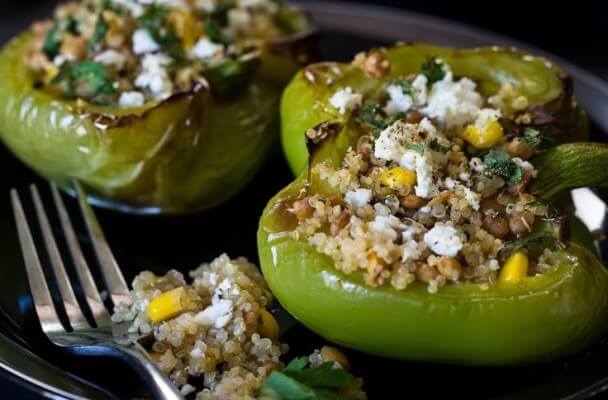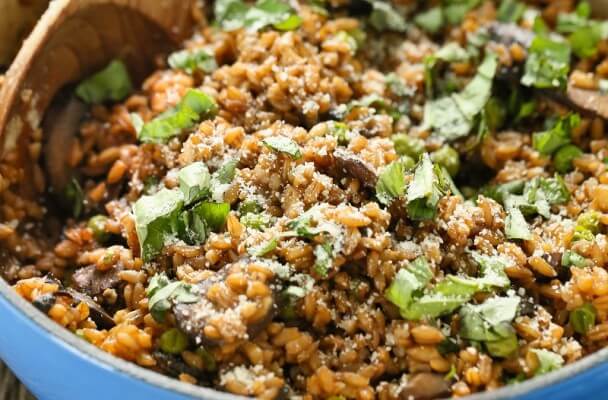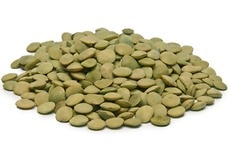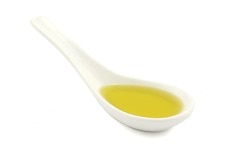Healthy Dinner Ideas
At the end of a long day, the exhausting task of formulating and executing a plan to make a healthy dinner can seem especially daunting. However, eating balanced and nutritious dinners can help you maintain a healthy body weight and manage chronic diseases such as diabetes, high cholesterol, and hypertension. In addition to learning what makes a healthy dinner, it is important to find strategies that allow you to prioritize nutritious dinners every night of the week.
Importance of a Healthy Dinner
Everyone says that breakfast is the most important meal of the day but that does not mean that dinner doesn’t carry its own great significance. For most people, dinner is the largest meal of the day, which makes it imperative to create nutritionally sound and balanced meals at dinnertime.
Because dinner is the last meal you eat before you go to bed, a good diner must supply you with a steady amount of fuel to support your body during sleep. One common reason for insomnia during the night is a hypoglycemic episode in which your blood sugar levels drop (White, n.d.). This means that eating foods that provide a sustained release of energy may help you sleep. Another reason for prioritizing a healthy dinner is that as the largest single source of calories during your day, you want to ensure that these calories come from nutritious sources. This entails creating dishes that include a wide range of the essential vitamins and minerals your body needs.
Components of a Healthy Dinner
So what makes up a healthy dinner? Like with all meals, when creating your plan for supper, you should consider the three major macronutrients used by the human body: carbohydrates, protein, and fat. Carbohydrates are your body’s primary source of energy (U.S. Department of Agriculture, 2016). When your digestive system breaks down carbohydrates, it changes them into sugars that are used to fuel cellular processes. Excess glucose is stored for later use.
Proteins are made up of amino acids that are used to create important molecules, build bone health, and promote healthy tissue growth (U.S. Department of Agriculture, 2016). Because your body does not store excess protein in the way it stores carbohydrates or fats, you need to eat plenty of protein every day. Finally, fats are another source of energy. Because your body cannot synthesize certain fatty acids on its own, you must get them from the foods you eat.
Choose Foods that Balance Your Nutritional Needs
Calories are simply a unit of measurement for the amount of energy in your food. The number of calories you should include in a healthy dinner depends on your age, sex, body composition, and physical activity level. In general, you should aim to get roughly one-quarter of your daily calories from dinner (University of Colorado Colorado Springs, 2015). This means that if you are aiming for 2,000 calories per day, your dinner should be roughly 500 calories.
One of the best ways to ensure you make your dinner healthy is to visualize the relative ratios of different foods on your plate. Approximately half of your plate should consist of fruits and vegetables (Choose My Plate, 2016). Try to eat fresh fruits and veggies from several different color families to ensure you get enough nutrients. For example, you could include a mixed salad, sliced tomatoes drizzled with olive oil, roasted sweet potatoes seasoned with rosemary, steamed broccoli, or roasted eggplant for a vegetable side dish.
Approximately one-quarter of your plate should be grains, preferably from whole grain sources (Choose My Plate, 2016). This could be wheat berries, whole-wheat pasta, a piece of whole grain toast, bulgur, barley, or quinoa. Whole grains contain complex carbohydrates that keep your body energized throughout the evening and night (U.S. Department of Agriculture, 2016).
Finally, the remaining quarter of your plate should be a source of lean protein (Choose My Plate, 2016). Ideally, your protein source should come from non-meat sources, such as soy products, legumes, beans, eggs, or nuts and seeds. This may require a shift in thinking for people who tend to make meat the primary food group in a dinner. For example, rather than serving an entire steak, it is healthier to stir fry small strips of steak with a lot of mixed fresh vegetables. Similarly, substituting some of the ground beef in a lasagna for seasoned lentils can lighten your dinner without sacrificing flavor or texture.
Strategies for Healthy Dinners Every Night
It is easy to become daunted when faced with the prospect of creating a new, healthy dinner every night. Fortunately, meal planning makes your job a lot easier. Once a week, make a list of healthy meal ideas for the upcoming days. Then, use this meal plan to create a shopping list for your week. Rather than staring at an empty refrigerator wondering what you could possibly create that is healthy, you will have tons of fresh produce and ingredients to craft nutritionally balanced meals. This also cuts down on the number of unplanned runs to the grocery store, which waste your time and increase dinner-related stress.
Another good strategy is to prep as many ingredients as possible after grocery shopping. Setting aside a couple of hours on the weekend to chop vegetables, to cook rice and other grains, or to cook a chicken to use throughout the week. This saves time and ensures you have healthy ingredients on hand. Also remember that if you make larger batches of dinner, you can take the leftovers for a healthy lunch tomorrow.
Staying Healthy While Eating Out at Restaurants
Eating out at restaurants is one of the biggest challenges to eating healthy meals, as restaurant dinners are often laden with excess calories and fat. Consider the following strategies to stay healthy while eating out (Deptolla, 2015):
- Order a side salad to arrive ahead of your entree. Salad will fill you up, preventing you from overeating later in the meal. Alternatively, ordering a salad entree with light dressing can prove among your healthiest dinner options.
- Be conscious of beverages. Resist the free refills that many restaurants offer for soda or iced tea. Opt for plain water to cut excess calories.
- Watch your portions. When you order, ask for a box. When your entree comes, you can immediately box half of it to ensure you eat an appropriate portion.
- Steer clear of the bread dish. Stick to eating no more than one or two small pieces of bread to prevent yourself from loading up on simple carbohydrates before your meal arrives.
Dinner Recipes
Creating a healthy dinner plan is easy when you have your favorite recipes at the ready. Check out the recipes below and find a full list of our dinner recipes here.

Quinoa Stuffed Peppers Recipe {gluten-free}
A well-balanced plate with a full, rich flavor- these stuffed peppers blend the sharp savor of bell pepper with the soft brine of feta cheese define the principle sensation of your supper, while corn, lentils, and quinoa add heft and nutrients.
Ingredients: Quinoa, green bell peppers, canned lentils, fresh spinach, feta cheese, frozen corn (thawed), salt, black pepper.
Total Time: 40 minutes
| Yield: 6 servings (8 half-peppers)

Farro Risotto with Mushrooms Recipe
Although risotto typically relies on rice for its robust consistency, replacing the grain with farro offers a flavorful source of protein and fiber in addition to the same starchy feel. Parmesan, garlic and basil give the plate a complex palate.
Ingredients: Organic pearled farro, sliced mushrooms, garlic cloves, extra virgin olive oil, frozen peas, salt, fresh basil, parmesan cheese, hot water.
Total Time: 1 hour, 15 minutes
| Yield: 6 servings
Dinner Ingredients
Whether you’re following one of our recipes or improvising on your own, the following ingredients will prove instrumental in your endeavor to assemble a delicious healthy dinner.
Healthy Eating
- Healthy Snacks
- Healthy Highlights
- 5 Uses for Cacao Powder
- 5 Ways to Eat Farro
- 6 Best Gluten-Free Foods
- Alcohol and the Body
- Almond Flour Recipes
- Anti-Aging Superfoods
- Beat the Afternoon Slump
- Benefits of a Plant-Based Diet
- Benefits of Baobab
- Benefits of Cashews
- Benefits of Coconut Oil for Hair
- Benefits of Coconuts
- Benefits of Dates
- Benefits of Fenugreek
- Benefits of Garcinia Cambogia
- Benefits of Goji Berries
- Benefits of Kale Chips
- Benefits of Monk Fruit Sweetener
- Benefits of Peanuts
- Benefits of Pecans
- Benefits of Pistachios
- Benefits of Pumpkin Seeds
- Benefits of Spelt Flour
- Benefits of Steel Cut Oats
- Benefits of Sunflower Seeds
- Benefits of Tiger Nuts
- Benefits of Turmeric
- Benefits of Walnuts
- Benefits of Wheatgrass
- Best Food Fads
- Cacao vs Cocoa
- Caffeine-Free Energy Foods
- Chocolate That's Good for You
- Diet vs. Exercise
- Fat Burning Foods
- Food Myths Debunked
- Foods for Bone Density
- Foods for Colon Health
- Foods for Healthy Hair
- Foods for Healthy Skin
- Foods to Help Sleep
- Foods to Reduce Stress
- Green Tea Benefits
- Healthy Baking Flours
- Heart Healthy Habits
- High Protein Health Risks
- How to Boost Your Metabolism
- How to Lose Weight While Aging
- How to Throw a Vegan BBQ
- Kaniwa vs Quinoa
- Little Health Foods
- Low-Carb: Fad or Friend?
- Making Healthier Desserts
- Mediterranean Diet Meal Plan
- Natural Beauty Products
- Nuts for Weight Loss
- Preparing Vegan Meals
- Preventing Muscle Degeneration
- Rare Superfoods
- Reduce Sugar Intake
- Save Time By Going Vegan
- Smarter Snack Swaps
- Smoothie Ingredients
- Soy Protein vs Whey Protein
- Starting a Plant-Based Diet
- Steel Cut vs Rolled Oats
- Sugar Substitutes
- Vegan Proteins
- Vegan Substitutions for Fall Recipes
- Why Go Vegan
- Healthy Recipes
- Sports Nutrition
- Nutrition and Special Diets
- 21 Day Fix
- 5 Popular Diet Similarities
- Alkaline Diet
- Anti-Inflammatory Diet
- Calorie Counting
- Carb Cycling Diet
- Celiac Disease
- Cholesterol
- Clean Eating
- Crohn's Disease
- DASH Diet
- Detox Diet
- Diabetes
- Diabetes Diet
- Diet Pill Dangers
- Fat Burning Foods
- Gluten-free Diet
- Glycemic Index
- Heart Health
- High Blood Pressure Diet
- High Fiber Foods
- How to Eat Healthy
- How to Lower Blood Pressure
- Hypertension
- IBS Diet
- Ketogenic Diet
- Liquid Diet
- Low GI Foods
- Low-Carb Diet and Foods
- Low-Fat High-Carb Diet
- Mediterranean Diet
- Mediterranean Diet Foods
- Military Diet
- Nutrition Labels Explained
- Paleo Diet
- Raw Food Diet
- Superfoods
- Sustainable Weight Loss
- Thrive Diet
- Vegan Diet
- Vegetarian Diet
- Weight Loss Shakes
- Whole30
- Vitamins, Minerals & Nutrients



